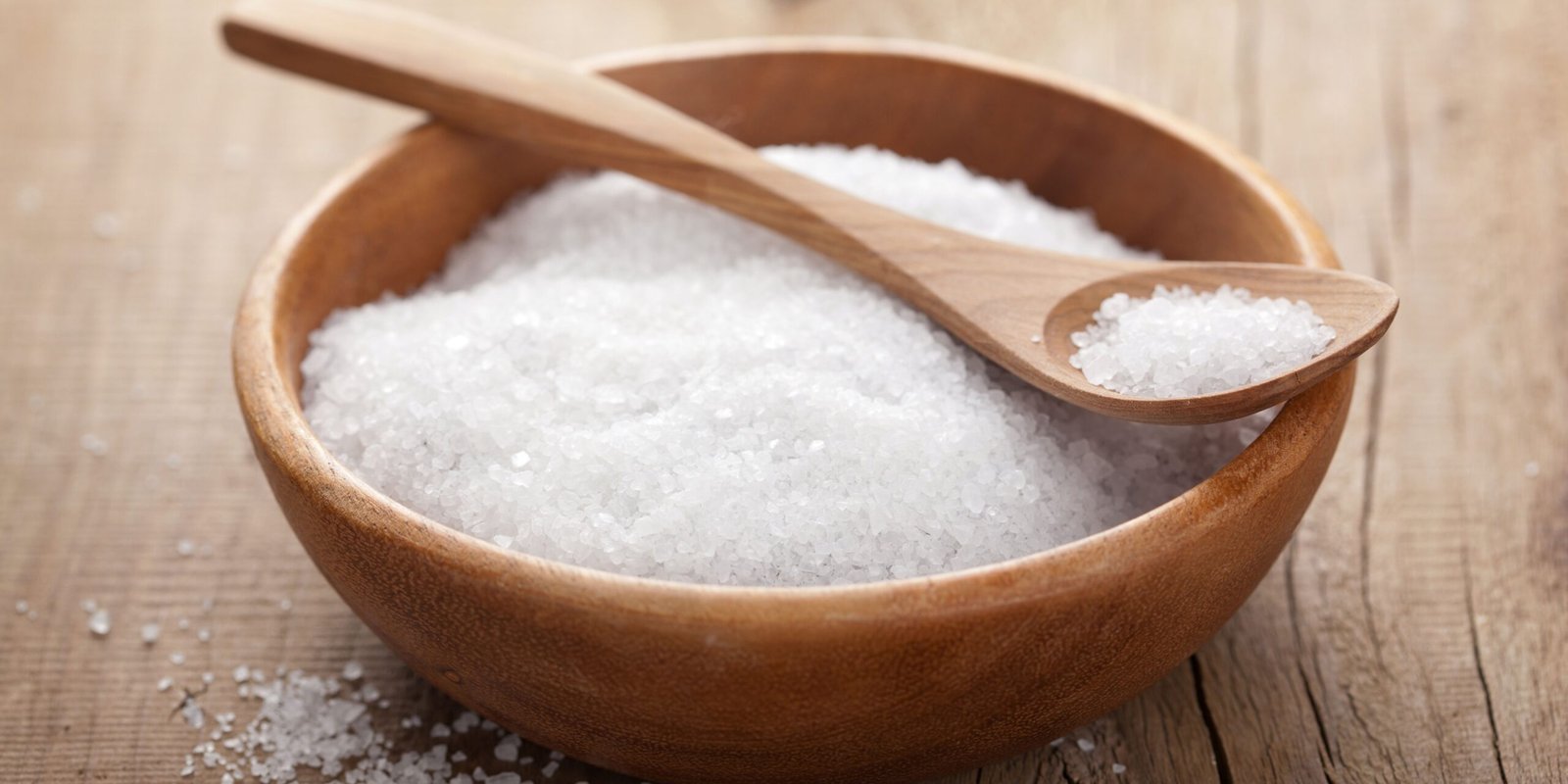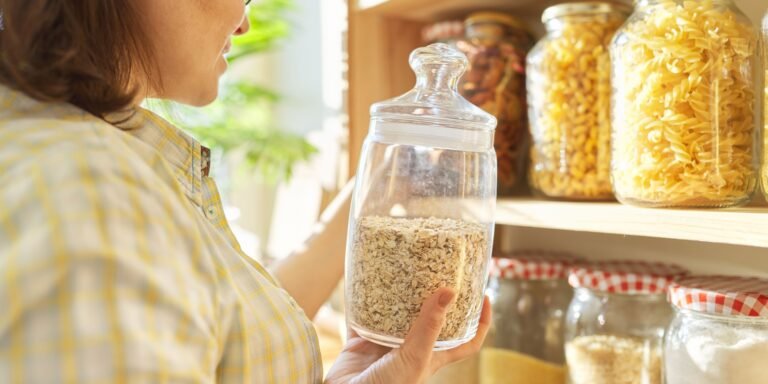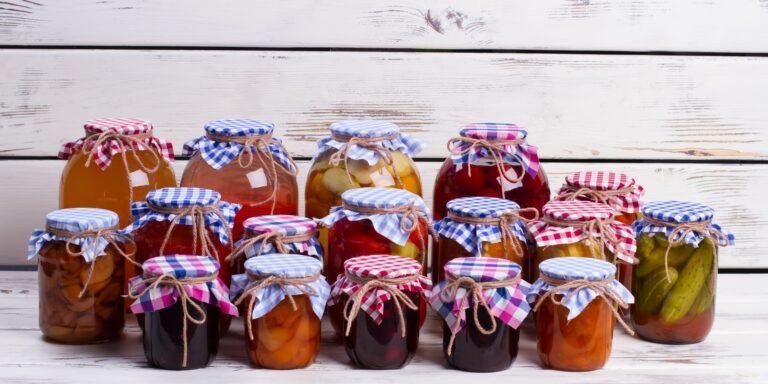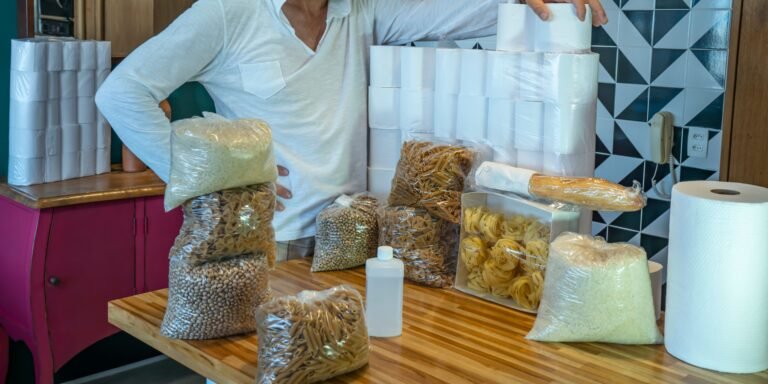How To Store Salt Long Term
This post may contain affiliate links, full disclosure here.
Salt is an essential component of our everyday diet. It is the primary source of chloride and salt ions in the average human’s daily diet. Human health is also influenced by the amount of salt consumed.
The sodium in salt is required for muscle and neuron function, as well as the regulation of body fluids. Sodium also has a significant impact on blood volume. It also plays a role in blood pressure regulation.
Salt contains chloride, which is required for the stomach to make stomach acids. Salt is essential not only for humans but also for some animals. Many animals require salt to supplement their everyday diet.
Salt is used in cooking as a condiment and in the preservation of goods that must be maintained for extended periods of time. It’s also required for the production of dried meats.
If the ice on the road becomes too thick for vehicles to drive on, salt can be used to melt it. Ice cream is made using salt because it reduces the melting point of the water within the ice cream. Salt is essential for our daily survival, and it can be preserved for a long time if purchased in bulk or for an emergency.
Let’s have a look at several methods for storing salt for long periods of time in your salt stockpile.
See also: How To Store Quinoa Long-Term
Why Should I Store Salt?
The optimum food storage will have all of the essential dietary elements for good health. Salt is a necessary component for your survival. Consider what your diet would be like if you didn’t have any salt. Have you thought about putting salt in your basic food storage? We’ve outlined a few compelling reasons why salt should be included in your food storage essentials.
Health Benefits
Human health necessitates the use of salt. We can’t survive without salt. According to Harvard Medical School, salt aids in the maintenance of a normal fluid balance, the transmission of nerve impulses, and the function of our muscles. In an effort to conserve sodium, the body will retain fluid if it has too little sodium.
Fatigue, dizziness, confusion, seizures, migraines, irritability, weakness, and vomiting are just a few of the negative consequences of sodium deficiency. To be healthy, we all require a small amount of salt.
See also: Shelf Life Of Wheat Berries
Enhancement of Flavour
Salt does a fantastic job of improving food flavour. Salt, when used in moderation, enhances the sweetness and reduces bitterness. A pinch or two of salt can improve almost any dish. A loaf of bread can be made entirely with ground wheat and water. To be honest, it tastes flat and flavourless to me. When you add a teaspoon of salt to the dough, though, it transforms into a delectable treat.
Preserving Food
Salt preserves food and produces an environment in which bacteria, fungus (yeast, mold), and other harmful organisms are unable to thrive. It absorbs moisture from the meal and dries it out. To cure and preserve meat, salt is utilized. The salt takes moisture out of the air, preventing bacteria from multiplying and spoiling the meat. Salt is a key component in the fermentation process. Food preservation is very important to know in case of ean mergency!
How Long Will Salt Last?
Under normal circumstances, pure salt (sodium chloride) will last indefinitely, but to avoid appearing overly hasty, let’s simply state that salt will last a long time. If you plan on preparing and storing your salt for five years, it should survive at least that long.
Keeping your salt in the original package will shorten the storage life in the long run.
When other ingredients, such as anti-caking agents, are added to pure salt, a shelf-life is assigned to it. Other ingredients added to salt may reduce its shelf life, but it can still be kept for a long period. When storing salt, the most common issue is that it becomes saturated with moisture and begins to cake.
The Wrong Way to Store Salt
Salt is naturally hygroscopic, meaning it can absorb moisture from the air. It will also attract the water in its immediate vicinity.
Damp conditions: As you might expect, storing salt in a moist environment is not a good idea. The salt could absorb even the moisture in the air around it. You’ll want dry location with air flow when storing your salt.
Plastic containers: You are mistaken if you believe that plastic containers are a good choice for storing salt because they are not water absorbent. The chemicals in the plastic could contaminate the salt if they spill into it. There are food grade plastic buckets (gallon buckets) you can use, but glass jars, and vacuum seal bags are great options for salt storage container.
Metal containers: Those ancient, valuable metal vessels aren’t safe to keep salt in. The corrosive characteristics of salt are well-known. The salt’s dampness may cause the metal to corrode, contaminating the salt.
Containers made of cardboard: Containers made of cardboard can collect moisture from the environment and saturate the salt inside. When you think air-tight container, cardboard doesn’t come to mind.
The Right Way to Store Salt
Salt should be kept in a container that is not permeable to water. Salt must be kept in a cool, dark environment. The storage location should also be dry, and the container used to store salt for an extended period of time should be able to be sealed.
DRY is the key to long-term salt storage. The region must be completely dry. It cannot be overstated. Salt’s deadliest enemy is moisture.
If you want to preserve salt in the same packaging in which it was purchased, it’s a good idea to place the packaging inside another container. Then a plastic container with a cover that can seal everything within will be safe to use. Even if the original container is made of cardboard, you can place it inside the plastic container and seal the lid to keep it fresh for a long time.
Glass container: One of the safest containers for storing salt is a glass jar. There is only one issue with the glass container: you will need to cover it with a plastic top. Any metal lid you use will corrode due to the salt’s corrosive nature.
Containers made of ceramic or clay are equally safe, but you’ll need a technique to seal them. A plastic lid is the safest option for this.
Mylar bags are another excellent way to keep salt in long term storage.
What Types of Salt Can Be Stored Long Term?
Not all salts can be stored indefinitely. Some salts keep better and for longer periods of time than others. Some salts with other additives may not last as long as pure salt.
Even if anti-caking chemicals are added to regular table salt, it can still persist a long time. Certain salts, on the other hand, do not have a lengthy shelf life, so have a look at some of the different salts to see how long they can be stored.
Anti-caking chemicals have been added to regular table salt, yet it can still be stored for a long period.
Iodized salt is a unique type of salt. When other chemicals are added to salt, it is no longer sodium chloride, and it is no longer considered common or natural salt. Even when the chemical makeup of iodized salt is modified by adding a little amount of potassium iodide, it can be preserved for up to five years.
Pink Himalayan salt includes about 98 percent regular salt and the remaining 2% is made up of trace minerals like potassium, copper, calcium, and iron.
Canning and pickling salt is nothing more than pure natural salt devoid of anti-caking additives. It can also be used as table salt. This salt can be kept for an infinite period of time.
Natural sea salt can also be preserved for a long period of time. It has an infinite shelf life, just like your other natural pure salt.
Kosher salt is a coarse edible salt that is devoid of typical additions such as iodine. When properly stored and kept free from pollutants, this salt can last indefinitely. Keep in mind that kosher salt may change colour somewhat after being stored for a long time, although it is still safe to eat.
Curing salt is a salt that is used to keep meat and fish fresh. It destroys any microorganisms that may be present in the meat, reducing the risk of foodborne illness. Salt, sodium nitrate, sodium nitrite, propylene glycol, and sugar are common ingredients in curing salt. If it contains salt and sodium nitrate or nitrite, it has an unlimited shelf life.
Ice cream salt is a type of rock salt that is not intended for human consumption. It’s instead used to cool and freeze ice cream and other frozen refreshments. Calcium sulfate, sand, and clay are all possible ingredients. Rock salt has an unlimited shelf life when stored properly and free from moisture and humidity.
How Much Salt Should I Store?
The amount of salt that should be stored varies widely among so-called experts. Many food storage calculators suggest storing 3 pounds of food per person per year. That seems like a risky number to me, so I performed some research and came up with a personal suggestion of 10 pounds per person every year. Take into account the following:
- The American Heart Association recommends that an adult needs a minimum of 500mg (about 1/10 teaspoon) per day with a maximum allowance of 1,500 mg (1/4 teaspoon) per day. The average American eats closer to 3,400 mg (2/3 teaspoon) every day.
- A study by Brigham Young University recommends storing 8 pounds per person per year.
- The Nutrition Facts on containers of salt list the recommended serving size as 1/4 teaspoon and state that amount is 25% of the Daily Value. There are roughly 70-80 teaspoons in one pound of salt, depending on the variety of salt. If we allow for 1 teaspoon of salt per day, we would need to store about 5 pounds for 1 year.
In baking, cooking, and preserving, I will use a substantial amount of salt if I am using my food stockpile in a survival situation. I believe that BYU’s estimate of 8 pounds per person per year for estimating the quantity of salt to include in long-term storage is an acceptable estimate. You can also use salt for cleaning, here is some information on that.
We’ve decided to store a base of 10 pounds for each person in our personal storage. It’s far too vital to risk running out of salt. I have a range of salts on hand to meet our various demands, and most of them have an unlimited shelf life. Salt is also a good barter item and might be obtained for free.
Is it true that salt loses its flavour after being stored for a long time?
It is a component of sodium chloride when you have pure salt. This implies it won’t go bad or lose its flavor if you keep it for a long time. When salt is blended with other additions and flavours, such as herbs and seasonings, the flavor of the salt begins to fade.
To get the best results, keep your pure salt in an airtight container and store it in a cool, dry, and dark location for long-term food storage. Purchasing salt in bulk and repackaging it into smaller containers is the best technique to construct long-term salt storage. Long-term use of oxygen absorbers is not advised.
Bottom Line How To Store Salt Long Term
You can rest confident that your stored salt will not lose its flavour or become saturated by moisture and start clumping and caking now that you know how to store salt long term and we have looked at ways to store salt for a long period.
If you take the proper measures and store your salt in an airtight plastic container or vacuum seal bags you may put it away and forget about it until you need it again.







